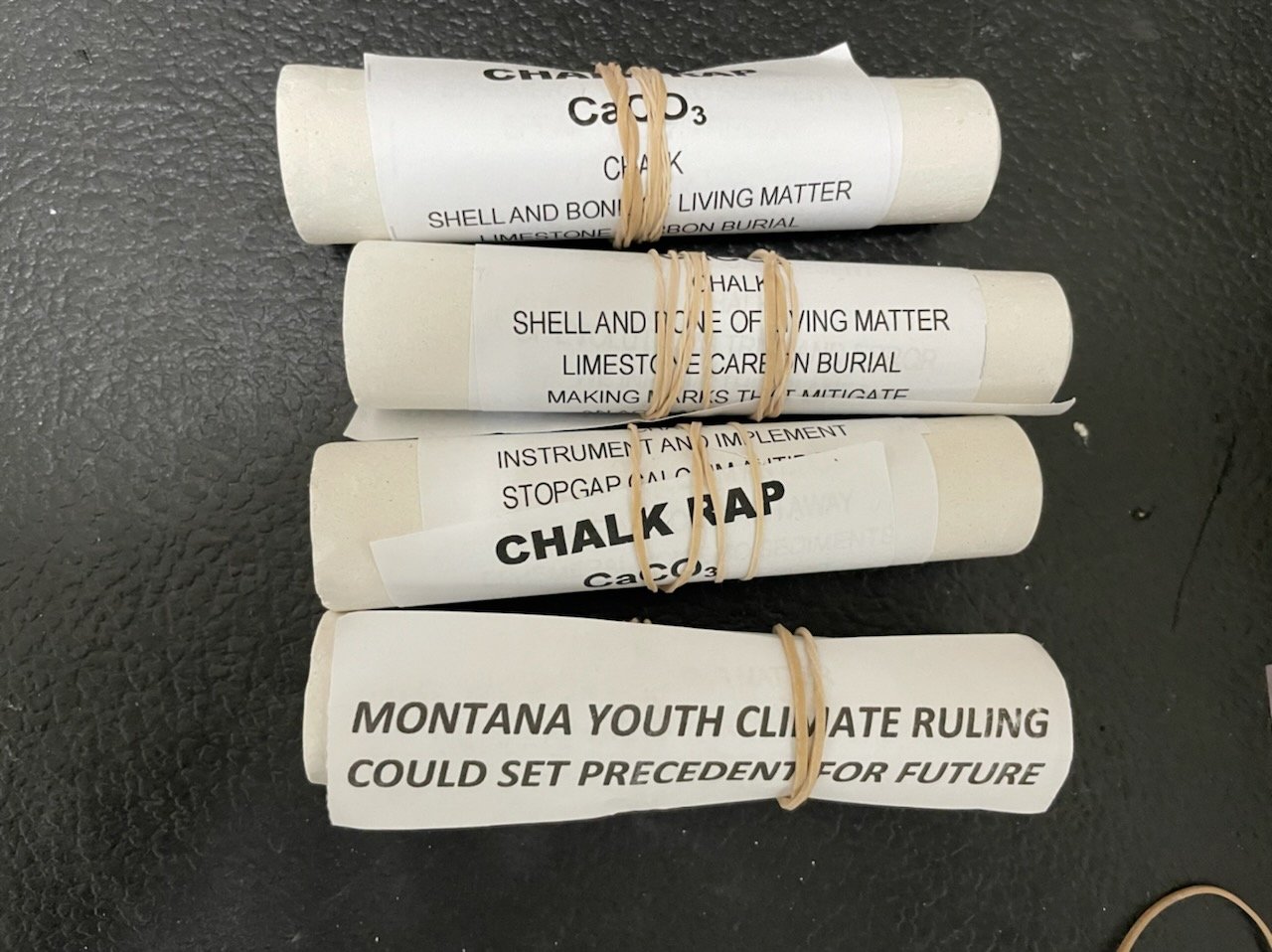Surge: Fostering Critical Discussions Between Artists and Scientists
By Nicolette Harrington, MoNA Link Coordinator
Tori Karpenko, Vessel For All That Remains, 2021, acrylic on reclaimed wildfire remnant, 90” x 52” x 48”
In partnership with the Skagit Climate Science Consortium, MoNA is bringing back Surge: Mapping Transition, Displacement, and Agency in Times of Climate Change, an exhibition drawing attention to climate change and its tangible effects on the Northwest’s Coastal communities. This exhibition is predicated on the idea that artists and scientists can together bring unique problem-solving skills to address important community challenges, from October 14, 2023 — January 21, 2024.
Given the unconventional nature and scale of the problems we face today, such as warming continents, fluctuating economies, and enormous cities—there is much to be gained from collaborations that bridge the best talents in both art and science. Artists and scientists are the ones who help bring problems and solutions front and center and inspire us to care and consider answers that resonate with our values. Art and science are both representations of the pinnacle of human evolution and are imperative for human survival.
In this short blog, I am going to explain some differences between the roles of these two pillars of knowledge, and then I will write about how they intersect.
Art and science—two distinctly different fields that employ opposite approaches, right?
While art relies on subjective inspiration and emotions, science utilizes objective logic and reason. But it’s not quite so black and white.
If you’re short on time, here’s the quick answer: Science follows the scientific method to make testable claims about the natural world. Art allows the free expression of ideas and emotions through creative media. Science can prove truths to us, while only art can make us feel them.
Natalie Niblack, Pine Grosbeak, 2023
Artistic Thought Process
Artists often start with a concept or idea and then explore different ways to bring it to life. They may experiment with various materials, techniques, and styles to achieve their desired outcome. The artistic thought process is often nonlinear and intuitive, allowing for spontaneity and creative expression. Art can express any feeling, moment, or thought without boundaries.
Artists encourage viewers to engage with their work and form their own opinions and meanings. The subjective nature of art allows for a wide range of perspectives and individual interpretations, making it a deeply personal and emotional form of expression. The value and significance of a piece of art varies from critic, curator, or collector who can recognize the work's artistic merit.
Scientific Thought Process
Science is primarily objective. For something to be scientifically accurate and proven correct, there needs to be a host of studies and tests to overcome before being established as a scientific fact.
Scientists follow a more structured and systematic thought process. They begin with a research question or hypothesis and then design experiments or studies to test their ideas. The scientific thought process involves careful observation, data collection, and analysis.
Scientists aim to eliminate biases or personal opinions from their research.
Scientific thought processes rely on evidence and reproducibility. Results are published in peer-reviewed journals, allowing other scientists to verify and build upon previous findings. Scientific knowledge is cumulative, with new discoveries and theories constantly shaping our understanding of the world. Scientific research is subjected to rigorous scrutiny by experts in the field before it can be accepted as valid.
Art Goals
Art, in its various forms, is primarily focused on self-expression, creativity, and aesthetic appreciation. Artists strive to evoke emotions, challenge perceptions, and make a statement through their work. The goals of art often include:
Creating something visually appealing or thought-provoking
Conveying a message or story
Eliciting emotions or sparking introspection
Exploring new ideas and pushing boundaries
Artists may not always have a clear-cut objective in mind, as the process of creation can be an organic and intuitive. The beauty of art lies in its subjective nature, allowing for multiple interpretations and personal connections.
Science Goals
Science, on the other hand, is driven by a quest for knowledge, understanding, and practical applications. Scientists employ systematic methods and rigorous testing to investigate the natural world and uncover facts. The goals of science often include:
Exploring and explaining natural phenomena
Developing theories and models to explain observations
Testing hypotheses and conducting experiments
Improving technologies and finding practical solutions
Unlike art, science strives to be objective and reproducible, relying on evidence and logical reasoning. The scientific method ensures that theories and conclusions are based on data and can be independently verified.
Buster Simpson, Chalk Wrappers, 2023
Art and Science Intersect and Influence Each Other
Though art and science have different thought processes and goals, they are not mutually exclusive. In fact, they often intersect and influence each other. Artists may draw inspiration from scientific discoveries, and scientists may use art, especially graphics, as a means of communicating their research findings to the general public. To make sense of data, we need creative approaches and art can provide representations of previously incomprehensible information.
Both art and science are examples of human attempts to comprehend the world around us and provide some explanation for it. A sense of curiosity drives both artists and scientists to innovate and inspire.
Art and science are about observation and interpretation, powers of imagination, persistence to achieve their visions through hard work, the perseverance to deal with challenges, and the ability to communicate new discoveries. Whether it is by using scientific data or technologies such as Artificial Intelligence and Virtual Reality to create art or by using art to understand and communicate science, both sometimes rely on each other. By connecting to art through conversations and projects, scientists gain new tools to visualize natural phenomena and communicate their complexities. These tools may enable scientists, like medical students studying art and Visual Thinking Strategies, to become wiser and more empathetic. Artists will continue to use emerging scientific technologies as tools for their work and to be inspired by scientific observations of nature, whether it is molecules, cells, or celestial bodies. This synergy enables us to better understand and work on urgent universal questions, such as the unknown impacts of climate change.
Upcoming
Learn more about Surge: Mapping Transition, Displacement, and Agency in Times of Climate Change, October 14, 2023 — January 21, 2024. Explore all programming accompanying this exhibition and be inspired!
This exhibition and education programs were made possible in part by:




